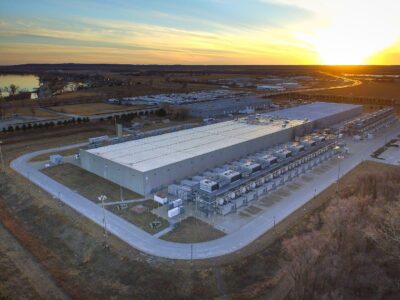Two more recent NEPA studies
These studies have better methodological approaches, and highlight the ways in which NEPA does (and does not) matter for renewable energy
In a prior blog post, I criticized a recent NEPA study from the Breakthrough Institute for some key methodological limitations. Two more studies of NEPA have since come out from Resources for the Future that I want to highlight because I think they have stronger methodological foundations. There are still important limits on what these studies can and can not say about NEPA, but they do give us some important insights into how NEPA works on the ground.
The two NEPA studies examine (1) the litigation rates and delays for renewable energy projects that have gone through significant NEPA review (defined as either an EIS or EA); and (2) the timeframes for approval for renewable energy projects that go through significant NEPA review (defined the same way). First, the key strength of both of these NEPA studies is that they attempt to look at the entire universe of renewable energy projects that go through a certain type of NEPA review, not just the projects that are litigated (a limitation of the Breakthrough study). This gives us a better sense of the “denominator” of the total number of projects at stake. Second, the researchers also attempt to survey a broader range of the relevant litigation – they try not just to obtain opinions available on Westlaw, but also court cases that may not have produced opinions submitted to Westlaw (through secondary source news coverage of litigation).
The takeaways from these studies are also helpful. First, litigation rates are higher for projects that go through an EIS (quite high in fact), but are much lower for projects that go through an EA. That makes sense, since whether a project goes through an EIS is probably in part determined by whether it is controversial, which in turn will affect whether it is litigated. (And whether a project is controversial likely correlates with the potential environmental impacts of the project, or at least with disputes over the potential environmental impacts of the project.) Second, litigation can cause significant delays, in large part because of the appeals process – the initial trial court may resolve a case fairly quickly, but appeals can take a long time. This is consistent with what we found from our study of litigation of approved housing projects in California. Third, litigation of renewable energy projects appears to have subsided after 2014. There are no lawsuits challenging BLM approval of renewable energy projects on federal lands after that date, and a few lawsuits challenging approvals by other federal agencies after that date. Fourth, for NEPA reviews (not litigation), approval timeframes for most projects were under two years, but there was a long tail of projects that went through an extended review period. However, the study did find significant delays after the completion of NEPA processes, indicating that other factors – whether it is other agency permits, or financing and construction issues for project proponents – are also significant contributors to delays.
These studies are helpful, though they still have important limitations. First, as noted in my prior blog posts, we really can’t say much about the stringency of a legal standard or whether a law is plaintiff or defendant friendly from litigation win rates. Second, the study cannot tell us anything about projects that are never submitted because of the concern about delays or litigation (a problem inherent in all of these studies). And third, the researchers could have used docket search tools such as PACER to try and track down more detail about litigation.
Overall, the results point to possible ways to reduce delays for renewable energy projects in general, and from NEPA in particular: appeals courts are key constraints; other permitting issues besides NEPA might be important; and litigation appears to be a decreasing risk for renewable energy projects (at least until now, but trends could of course change).
Reader Comments
2 Replies to “Two more recent NEPA studies”
Comments are closed.







I wonder whether the drop-off in litigation after 2014 is related to the BLM’s 2012-13 programmatic EIS and ROD creating solar energy zones and variance lands open to project proposals. I suspect that being able to tier to an existing, programmatic analyses allows the agency to proceed more quickly and creates a stronger record for project-level decisions.
Thanks for bringing these two new RFF reports to our attention!
Sorry to be obvious – but many projects may have been improved because of this process, no? Do we have a metric for that?